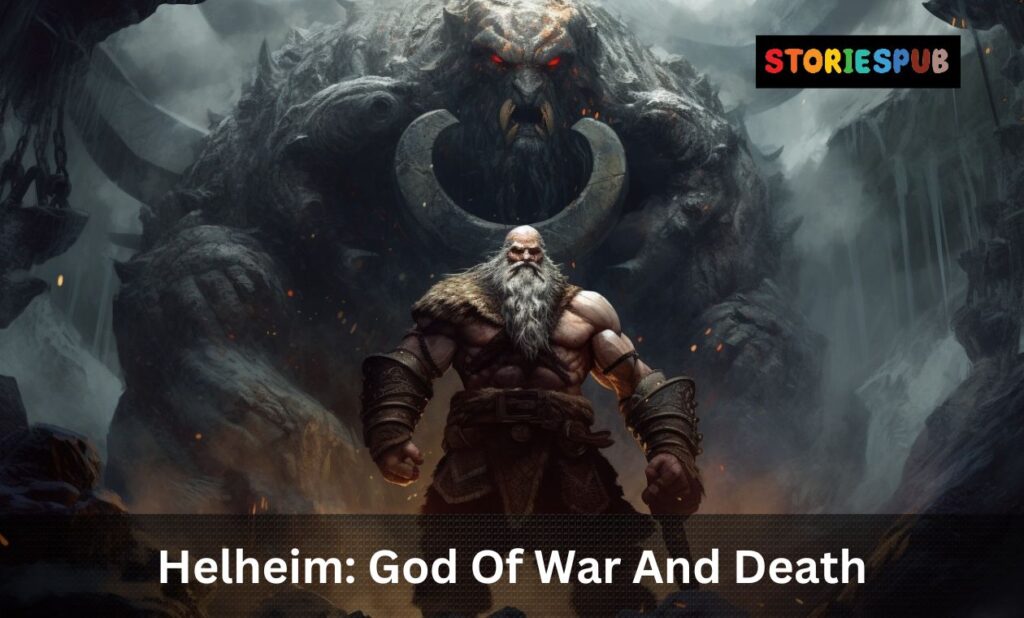Summarize this Article with:
Helheim: A Tale of Death, Discovery, and Meeting the Goddess Hel

Introduction
In Norse mythology, Helheim is the underworld ruled by the goddess Hel. It is a place where those who die of old age or illness go after death.
The realm is said to be located beneath one of the roots of Yggdrasil, the world tree. Helheim is also known as Niflhel or Niflheim, which means “mist world” in Old Norse.
The Arrival
The story begins with a young woman named Freya who dies of an illness and finds herself in Helheim. She is greeted by the goddess Hel, who welcomes her to her realm. Freya is initially frightened but soon realizes that Helheim is not as terrifying as she had imagined.
Hel tells Freya that she can stay in Helheim as long as she wants and explore its many regions. Freya accepts this offer and begins her journey through the underworld.
Exploring Niflhel
As Freya explores Helheim, she discovers that it is divided into several regions, each with its own unique characteristics. She visits Niflhel first, where those who died from disease or old age reside in eternal darkness.
Freya sees thousands of souls wandering aimlessly through this dark realm. They are all silent and seem lost in their own thoughts.
The only thing that breaks this eerie silence is the occasional moan or sob from a soul that has just arrived. Despite being scared at first, Freya starts to feel compassion for these souls and wonders about their stories before they arrived here.
The Punishment Realm Nastrond
Next on her journey through Helheim was Nastrond – a place where murderers and thieves are punished for their crimes. This region was much different than Niflhel – it was filled with screams of terror and pain. Freya watches in horror as the souls are being punished by giant venomous snakes that drip poison into their wounds.
This punishment is said to last for eternity, and the souls scream in agony but can never die. Freya can’t help but feel grateful for her peaceful death, realizing how lucky she was to avoid such a fate.
Meeting Baldr
One day while exploring Helheim, Freya meets Baldr, a god who had been killed by his brother Loki. Baldr tells her about his life in Asgard and how he was beloved by all the gods.
Baldr explains that he is stuck in Helheim because of a curse from Loki. He cannot leave unless someone sheds tears for him – which is impossible since everyone loved him so much that they cannot stop rejoicing.
Freya feels sorry for Baldr and offers to help him break this curse. She succeeds in shedding tears over his death, which releases him from Helheim and restores his life.
Conclusion
Helheim may seem like a dark and scary place at first glance, but it’s much more complex than just a realm of eternal punishment or suffering. It’s an underworld with different regions that cater to those who died from various reasons – whether it be old age or illness or crime.
Freya’s journey through Helheim shows us that even such an intimidating place can bring out compassion and empathy in us. Overall, Norse mythology sees death as something inevitable – something we should not fear but rather embrace as another stage of our existence.
Hey kids, how much did you like The Helheim: A Tale of Death, Discovery, and Meeting the Goddess Hel ? Please share your view in the comment box. Also, please share this story with your friends on social media so they can also enjoy it, and for more such Norse Mythology, please bookmark storiespub.com.
Related Post :
Helheim FAQ
What is Helheim in Norse mythology?
Helheim is the realm of the dead in Norse mythology, ruled by the goddess Hel. It is where the souls of those who died of old age or illness are said to go.
What is Hel, the goddess of Helheim, like?
Hel is often depicted as a half-dead, half-alive figure, with a pale complexion and a morose demeanor. She is known for her ability to judge the dead and determine their ultimate fate.
How do you get to Helheim?
In Norse mythology, Helheim is said to be located beneath one of the roots of the world tree Yggdrasil. To get there, one would need to cross the River Gjöll, which separates the world of the living from the world of the dead.
What happens in Helheim?
In Helheim, the souls of the dead are said to live out their afterlife in a shadowy existence. They are neither rewarded nor punished, but instead continue to exist in a sort of limbo.
What are some stories associated with Helheim?
Helheim is mentioned in several Norse myths, including the story of Baldr's death and journey to the underworld.
What is the significance of Helheim in Norse mythology?
Helheim represents the importance of death and the afterlife in Norse culture, as well as the idea that one's fate is determined by their actions in life.
Are there any symbols associated with Helheim?
Helheim is often associated with the color black, as well as with the image of the River Gjöll and the goddess Hel herself.
Is there a modern-day equivalent to Helheim?
While there is no direct equivalent to Helheim in modern times, the concept of the afterlife and the importance of death and judgment are still significant in many cultures around the world.
How is Helheim portrayed in popular culture?
Helheim has been adapted in various forms in popular culture, including in video games, literature, and television shows. It is often depicted as a dark and ominous place, filled with danger and mystery.
What is the relationship between Helheim and other Norse mythological realms?
Helheim is one of the nine realms in Norse mythology, and is often considered to be one of the lower realms, alongside Niflheim, the land of ice and mist. It is also closely connected to Valhalla, the hall of the slain in Asgard, as well as to the other realms of the dead in Norse mythology.
















